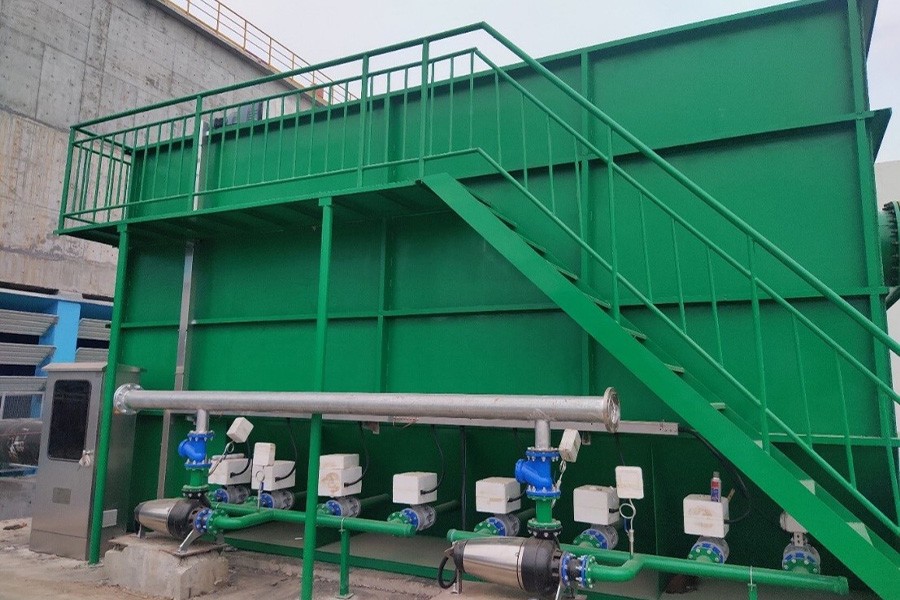In modern smart homes, optimizing airflow is as important as lighting, HVAC, and insulation. Poor air circulation can lead to hot or cold zones, stale air, and inefficient energy use. Enter intelligent circulation fan remotes — devices that go beyond “on/off” and let you proactively manage airflow to enhance comfort, energy efficiency, and indoor air quality.
In this article, we'll explore how the RCT5011 and RCT8011 remote controllers from Jiechuang Shinco (Jie Chuangxinke) Electronics revolutionize home airflow, why they matter, and how you can leverage them in your living spaces.
You can check the product details here:
-
RCT5011: https://en.remote-jcxk.com/intelligent-circulation-fan-remote-control-rct5011.html
-
RCT8011: https://en.remote-jcxk.com/intelligent-circulation-fan-remote-control-rct8011.html
Why Home Airflow Matters
Before diving into remote features, it’s worth understanding why improving circulation is critical:
-
Temperature consistency: In many homes, ceilings trap warm air and low corners remain cooler. Circulation helps mix and evenly distribute heat or cool air.
-
Reduced reliance on HVAC: Better airflow means HVAC doesn’t have to work as aggressively to reach set temperatures, which can save energy.
-
Improved indoor air quality: Circulating stale air, preventing areas of stagnation, and distributing ventilation helps dilute pollutants, odors, and moisture.
-
Comfort and ergonomics: Properly distributed airflow reduces drafts, hot spots, or cold pockets—making rooms more uniformly comfortable.
Traditional ceiling or stand fans often run at fixed speeds or settings. Intelligent remotes elevate control, offering dynamic adjustments, targeted flow, and automation capabilities that respond to actual conditions.
Overview: RCT5011 & RCT8011 from Jiechuang Shinco
Jiechuang Shinco Electronics (also referenced as Jie Chuangxinke) markets the Intelligent Circulation Fan Remote Control in at least two models: RCT5011 and RCT8011. While both share a core mission—enhanced control over circulation fans—they differ in feature sets, design, and target use cases.
What we know about these models:
-
The RCT5011 is positioned as a high-functioning remote for circulation fans, likely aimed at most residential or mixed-use scenarios.
-
The RCT8011 may offer more advanced or premium features (e.g. extra modes, sensors, or design enhancements) or be a variant tailored for more specialized installations.
Because the product pages describe both models under the same brand and domain, we can infer they share the same control philosophy, interface, and wireless communication technologies. The brand promises intelligent control and refined user experience in the domain of circulation fan remotes.
Together, these models allow users to tailor airflow in ways that legacy fan controls cannot.
Key Features That Transform Airflow
Here are the standout capabilities that make the RCT5011 & RCT8011 game changers:
1. Multi-Mode Circulation Control
Rather than a single “fan on / off” mode, these remotes allow you to choose among circulation patterns—such as constant, oscillation, directional flow, or cyclic mixing modes. This ensures that airflow is matched to room usage, time of day, or ambient conditions.
2. Variable Speed and Fine Tuning
Rather than coarse high/medium/low, intelligent remotes allow fine-grained speed adjustment. This precision means you can dial in an airflow that’s strong enough to circulate but gentle enough to avoid draft discomfort.
3. Timer & Scheduling
You can program when the fan runs (or stops), allowing circulation to occur during hours when it’s most needed—such as early morning before occupancy or during hot afternoons. Smart scheduling helps balance comfort with energy saving.
4. Integration with Smart Systems
Though specific integration details depend on model, intelligent remotes often can pair with smart home systems (via RF, Wi-Fi, or other protocols) to allow automated behavior: e.g., if room temperature exceeds a set point, the remote triggers circulation.
5. UI & Interface Intelligence
Good remotes provide intuitive interfaces—clear keys, icons, LED feedback—making it easy to understand mode, speed, or scheduling status at a glance. The RCT models likely follow this philosophy given their branding as “intelligent.”
6. Reliable Wireless Communication
For a remote to truly be “smart,” it must reliably communicate with the fan unit despite walls, interference, or distance. These models presumably adopt strong wireless protocols (RF or others) to maintain responsiveness.
7. Energy Efficiency Algorithms
Advanced models may incorporate algorithms that avoid unnecessary over-circulation or detect when airflow is no longer beneficial (e.g. when indoor and outdoor air are in equilibrium). This helps reduce wasted electricity.
Real-World Impact: Transforming Rooms One Fan at a Time
Let’s illustrate how intelligent remotes transform everyday spaces:
Living Room
On a hot afternoon, your air conditioner cools the space, but the corners remain warmer. You enable oscillation circulation mode at medium speed to push cool air into every corner, creating uniform comfort.
Bedroom
You prefer gentle circulation at night. With the remote, you schedule low-speed mixing from 10 pm to 6 am. The rest of the day, the fan remains off, conserving energy.
Kitchen or Dining Area
Cooking emits heat and odors. A circulation fan controlled via remote can be triggered (manually or via conditions) to push air out or mix fresh air from vents—preventing stagnation.
Multi-Zone Homes
In homes with multiple rooms or open floor plans, each room or zone can have its own circulation fan paired with a remote. This allows customized airflow per zone, reducing the need for central HVAC overdrive.
Advantages Compared to Traditional Fan Controllers
| Challenge | Traditional Fan Control | Intelligent Circulation Remote |
|---|---|---|
| Fixed speed steps | Yes | No — fine tuning available |
| On/off only or limited modes | Yes | No — multiple modes and schedules |
| No scheduling or automation | Yes | No — timer & smart triggers |
| Poor remote reach | Yes | No — better wireless penetration |
| Lack of feedback UI | Yes | No — clear interface and status feedback |
Because intelligent remote systems address these weaknesses, they effectively transform how circulation works, making it dynamic, responsive, and user-centric.
Considerations Before You Buy
When selecting a remote like RCT5011 or RCT8011 (or equivalent), keep these in mind:
-
Compatibility – Ensure your circulation fan can accept remote control, or the manufacturer supports adding a remote module.
-
Range & Penetration – Choose remotes with strong wireless capability (e.g. RF) to avoid loss of control through walls.
-
User Interface Simplicity – A remote with too many modes but confusing layout is less usable than one with fewer, clearly labeled modes.
-
Power Source / Battery Life – Remotes should be low power or rechargeable to reduce maintenance.
-
Service & Support – Brands like Jiechuang Shinco often offer OEM/ODM customization and support—choose vendors with good after-sales.
-
Advanced Features – If you want automation, smart-home integration, or predictive control, pick the model (e.g., RCT8011) that supports it.
-
Durability – Bathroom or utility areas may face humidity or dust—choose remotes with robust casings.
A Comparative Example from the Market
While RCT5011 and RCT8011 are specialized models, it’s useful to look at other intelligent circulation or fan systems for comparison. For example, the SwitchBot Smart Circulator Fan offers automated airflow control tied to temperature and humidity. SwitchBot Smart Circulator Fan
Though this is a combined fan-and-controller product, it shares the same philosophy: intelligent circulation that responds to environmental conditions, reducing manual intervention.
Comparing such products helps clarify expectations for RCT-series remotes: seamless control, smart responsiveness, and smooth integration.
FAQs
Q1: Can I retrofit my existing circulation fan with these remotes?
That depends on the fan design and compatibility. Some systems allow adding a remote receiver module; others may require a new fan unit. Check with your fan manufacturer or vendor.
Q2: Do these remotes require Wi-Fi?
Not necessarily. Many intelligent remotes use RF (radio frequency) control, which is independent of Wi-Fi, making them more stable in environments with spotty wireless.
Q3: What about interference or signal degradation?
High-quality remotes use robust protocols with error correction and good penetration. But keep in mind physical obstacles (thick walls, metal structures) can degrade signal—so plan placement accordingly.
Q4: How much energy do these remotes consume?
The remote itself draws minimal power (often on standby). The real energy “investment” is in running the fan—but by optimizing circulation smartly, you often save on HVAC usage.
Q5: Can I integrate the remote into smart home systems?
If the model (e.g. RCT8011) offers interfaces (Zigbee, Z-Wave, Wi-Fi) or supports bridging, it’s possible. Always check compatibility or ask the vendor.
Summary: Why These Remotes Truly Transform Airflow
-
They turn passive fans into smart devices capable of responsive and adaptive airflow.
-
They enhance comfort by dynamically adjusting modes and speeds.
-
They conserve energy by combining optimal circulation with HVAC moderation.
-
They raise indoor air quality by keeping air moving and mixing.
-
They offer convenience via scheduling, remote control, and intuitive UI.
The RCT5011 and RCT8011 models from Jiechuang Shinco Electronics exemplify this transformation. With their intelligent design, robust wireless capabilities, and thoughtful control features, they make smart ventilation accessible for everyday homes.
If you’d like, I can prepare a companion article—e.g. “How to Install & Calibrate Your RCT5011/8011 Remote” or “Energy Savings via Smart Circulation Remotes”—or generate visuals/diagrams to accompany this post.
en.remote-jcxk.com
Shenzhen Jiechuang Shinco Electronics Co.,Ltd.






+ There are no comments
Add yours